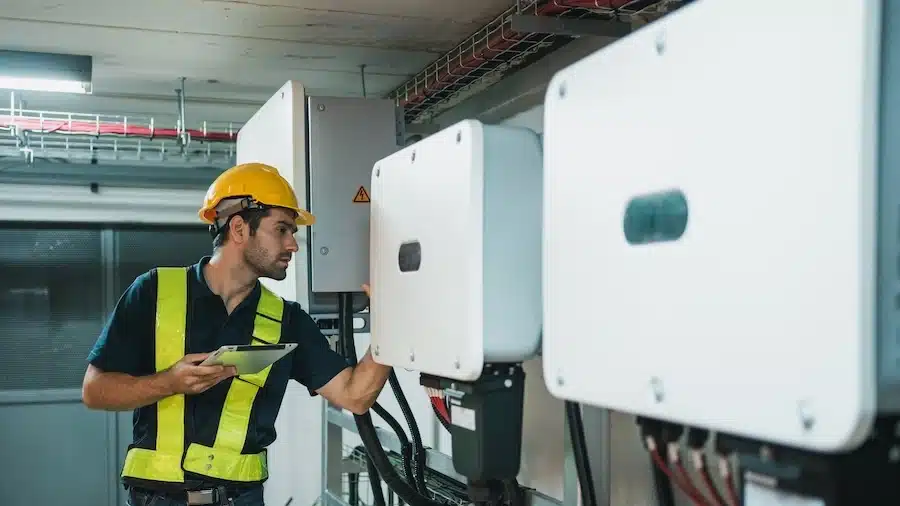Make sure your project partner is ready for the demands of applying for Innovate UK funding by clarifying these four things.
Applying for an Innovate UK grant with one or more partners is a great way to involve outside expertise, reduce development costs, and bolster your project’s credibility.
One potential downside, however, is that many organisations do not realise what’s required of them when partnering on an Innovate UK-funded project, which can cause friction and distort expectations that could jeopardise your application and development work.
To help you avoid these issues, we’ve compiled a series of points you should talk through with your project partner before kicking off your Innovate UK application. Broaching these topics may lead to some uncomfortable conversations, but it’s far better to have these discussions at the beginning of the process than in the middle of your R&D.
If you want help understanding whether your application could benefit from a project partner or advice on who in your network would make a suitable partner for your submission, we’d be happy to help.
What are the different types of project team members?
First, let’s explain what we mean when we talk about project partners.
When applying for an Innovate UK grant, you can include two types of organisations in your consortium: University partners and commercial/industrial partners.
Commercial/industry project partners have a vested interest in the project and will contribute match funding for their costs.
University partners could be a partner or a subcontractor. If they are a partner, they will not contribute match funding and Innovate UK will cover 80% of their Full Economic costs.
Project partners cannot be a:
- Subcontractor: Included in the project to undertake a specific activity and is paid 100% – subcontractor costs are capped. An example of a subcontractor may be a product designer or research consultancy.
- Test-Bed: A partner or subcontractor that provides a ‘real-life’ environment for your product or service
- Advisory Board: A group of experts that may be paid a day rate to provide key insights and critical points in the project
Now that we know more about the different kinds of partners you can involve in your application, let’s look at the topics you should cover with the organisations in your consortium before you get started on your grant application.
We’re going to focus on commercial/industrial partners, as universities tend to be aware of the commitment involved in working with a business to submit an Innovate UK grant proposal.
Codify how you’ll split the grant money and IP
The first thing you need to clarify is how you are going to divide up the funding between the various members of your consortium and what each member will do with their share of the grant.
This split will inform how you’ll approach the grant writing process and project execution. If one partner is going to receive the lion’s share of the grant, they will likely fill the role of Project Leader. This is the organisation that shoulders most of the administrative responsibilities of the grant application process. If you are going to divide the funding more evenly, who fills the Project Leader role will be up for discussion.
Speaking of splits, you should also determine how you are going to share the IP generated by your project. The simplest situation is where each organisation owns the IP created by their part of the development work. However, things can get a lot murkier, for instance, if the truly valuable IP is only created when the R&D conducted by multiple organisations is combined.
We suggest seeking legal advice on how the IP is defined and structured in projects at the outset. It’s especially good to do this if there are areas that are unclear and have the potential to cause conflict in the project.
To get more information about collaboration agreements to protect IP and define clear management, responsibilities and reporting roles in the project, check out this guide from UKRI.
Clarify project objectives
You and your partners should be clear about what they want to accomplish from the grant-funded project, both collectively and as individual organisations.
Lacking this clarity may cause disagreements about your project scope and what work you are seeking to achieve.
Here are some questions to get you started:
- What is the vision of the overall project?
- What do we want to achieve together in the project?
- What do we want to get from this project individually?
- What are the outputs of the project?
- How will these outputs benefit our organisations, combined and separately, from commercial, competitively, and technically speaking?
Check your partners can contribute match funding
Organisations that apply for Innovate UK funding as part of a consortium must demonstrate that they can finance the portion of the project costs not covered by the grant. This is called match funding.
How much match funding a partner needs to provide depends on what type of organisation they are and the type of grant. For businesses, it’s all about which competition they’re applying to. Innovate UK’s popular Smart grant will fund up to 70% of eligible project costs for feasibility studies and industrial research projects conducted by micro and small businesses. Successful applicants will need to match fund the remaining 30%.
Meanwhile, academic institutions will receive funding covering 80% of their Full Economic Costs regardless of which grant they’re applying for. Charities, not-for-profits, public sector organisations, and research and technology organisations (RTOs) will have 100% of their costs funded.
Before you begin your grant application, you should ensure your commercial partners can meet their match funding requirements. Some organisations assume that their Innovate UK grant will cover all or the vast majority of their costs, but this is rarely the case.
Make sure your partner's willing to be involved in grant writing
You’ll want to make sure that your partner is willing to help you write your grant application, especially in the two to three weeks before submission.
As you prepare your application, your partners will need to pay particular attention to the delivery timelines and expenditure for each consortium member. They will also need to ensure that the description of their role reflects what was initially agreed. The application needs to make the project look like a team effort, so all parties need to weigh in.
After winning your grant, Innovate UK will schedule check-in meetings every three months while your project is running to make sure your development work is on track. You’ll need to complete a lot of paperwork before these meetings, recording whether your project and expenditure are on track. It’s important to check that your partner is willing to participate in this ongoing process as they will need to input on the work packages they’re leading.
Ultimately, you want to work out whether this is a good time for your partner to be involved in a grant-funded project. Winning and utilising a grant requires a great deal of effort – you need to know your partner is ready and willing to rise to the task.
Need help with your project partners?
I hope the advice in this blog helps you build understanding and more productive relationships with your project partners.
If you want help identifying prospective partners from your network or expert advice on areas of your development that could be bolstered by outside expertise, our innovations grants team would be happy to help you.
Just drop us a line via the link below, and one of our team will be right with you.




